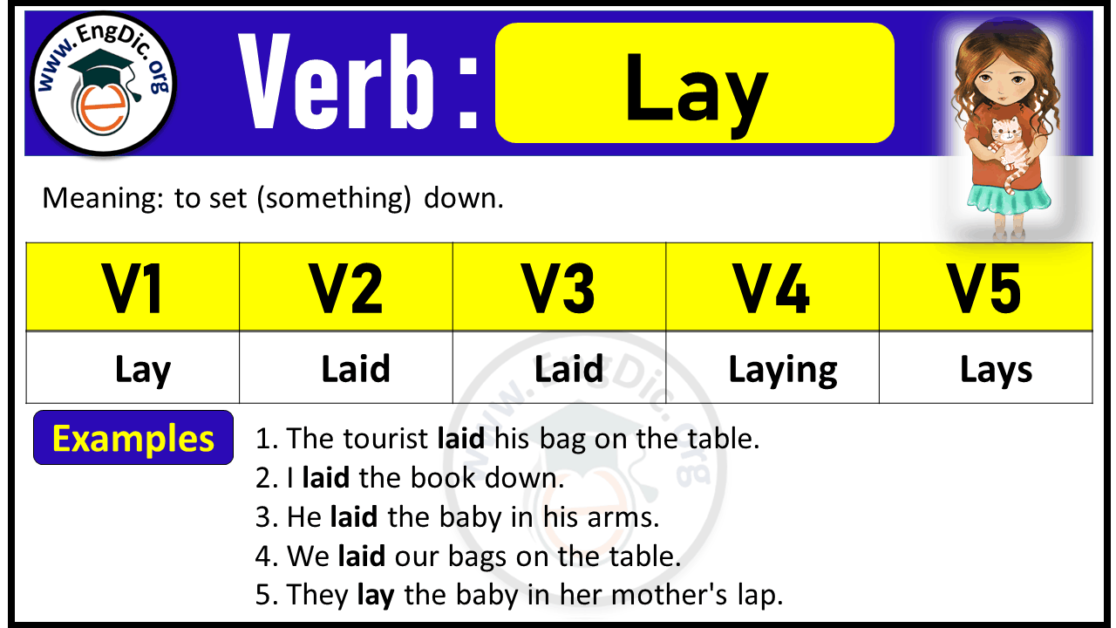

If you want an easy way to tell the difference between a situation that calls for ‘lie’ or one that calls for ‘lay,’ here’s a little tip.
#Past tense of lay down in bed how to
How to Tell the Difference between 'laying in bed' and 'lying in bed' We don’t wish to confuse you by highlighting this, but to make you aware so that when you see the word ‘lay’ used in this context, you can be sure it is the verb ‘lie’ in the past tense. He was so tired back then he just lay in bed all day. He is so tired these days he just lies in bed all day. The simple past tense of the verb ‘lie’ is ‘lay.’ Let us illustrate by showing you an example sentence in the present tense and the same example in the past tense. Right? But there is one instance where things can get a little complicated: when we use the verbs in their past tense. ‘Lying’ is the present participle of the verb ‘to lie.’ For example: That is why we say ‘lying in bed’ and not ‘laying in bed.’ You are not moving or doing anything when you are lying down. It is also a stative verb, meaning it describes a state. Lying is an intransitive verb, meaning it does not require an object, as explained above. For example:īe careful as you walk through the house we are laying a new carpet. ‘Laying’ is the present participle of the verb ‘to lay.’ The present participle tense describes an action currently happening. Watch out for the bare floor we tried to lay new carpets, but they didn’t fit.We’ll lay down a new layer of plaster on the wall.She laid the baby in his crib, ready for naptime.Here are some more examples to illustrate this: You can see in the example how there is movement involved. Laying is also a dynamic verb, meaning it expresses an action. Notice how, in the example above, ‘gifts’ are the object for the verb ‘laying.’ I’m laying your gifts on the bed so you can see everything I got you. So if you were going to use ‘lay’ in the context of a bed, it would be to say you are setting something on the bed. To lay something is to position it somewhere. Laying is a transitive verb, meaning it needs an object, as explained above.


Here are some examples of intransitive verbs: Some examples of transitive verbs include: Intransitive verbs, on the other hand, do not. Transitive verbs are verbs that act upon something else. Let’s begin by explaining the difference between transitive and intransitive verbs, specifically the verbs ‘to lay’ and ‘to lie.’ Transitive and Intransitive Verbs


 0 kommentar(er)
0 kommentar(er)
